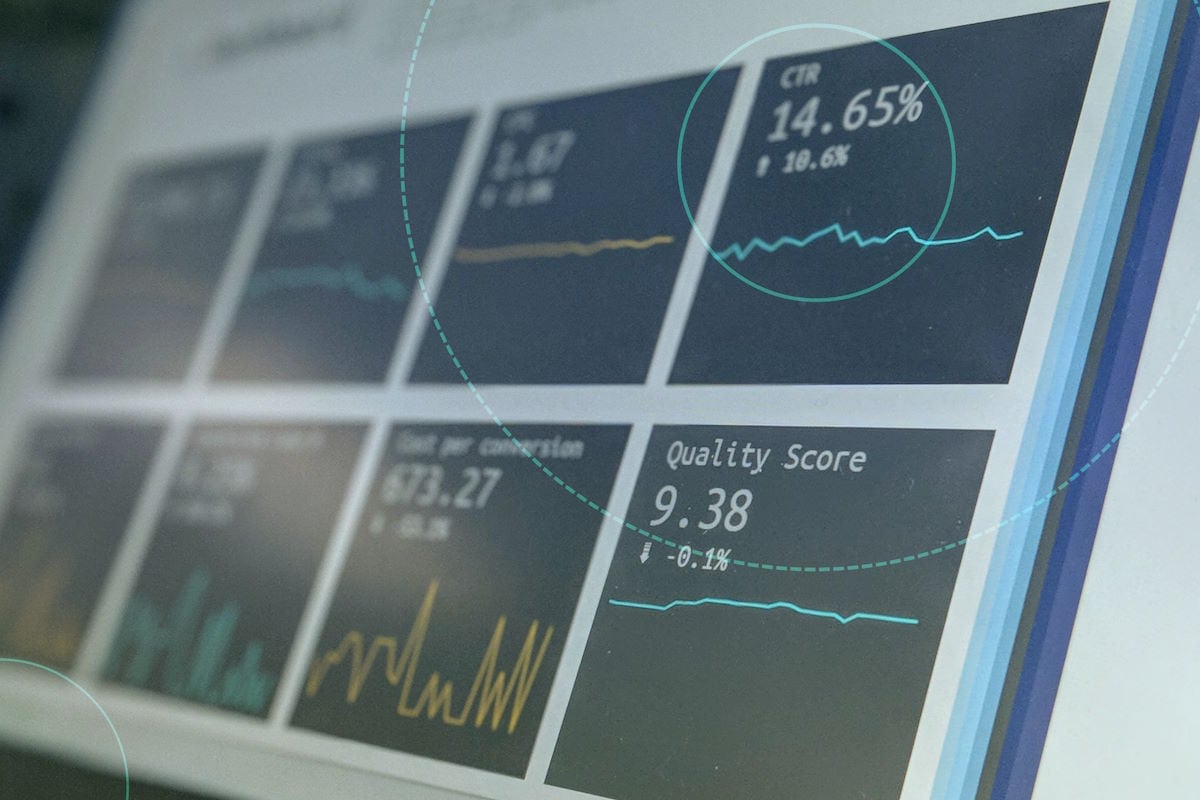Read this guide to learn the fundamentals of performance marketing, what channels to use, and how to start building your campaign strategy.
Learn the concepts, channels, and strategies behind performance marketing campaigns
You want to connect with new audiences, but traditional marketing can feel like throwing expensive spaghetti at the wall to see what sticks. For start-up and medium-sized businesses that don’t have endless marketing budgets to burn, this necessary expense can feel like an impractical one. Fortunately, there’s a way to practice marketing that feels less like divining the inscrutable and more like practicing a science: performance marketing.
After all, that’s the basic answer to the question “what is performance marketing”: It’s a scientific approach to building awareness for your business that uses concrete metrics to target the results you want. Here’s an in-depth introduction to the topic of performance marketing, starting with what distinguishes it from more traditional forms of the discipline.
What Is Performance Marketing and Why Does It Matter?
Performance marketing is any advertising program in which the marketer only pays when they achieve a specified result. These results are typically measured by some of the key performance indicators (KPIs) we’ll outline in the next section. This arrangement lets brands rest easy knowing their marketing budgets are funding campaigns that meaningfully impact their business.
Performance marketing may take the form of action-based marketing, which is aimed at generating specific actions, such as sales, newsletter signups, demo downloads, and so on. It may also be driven by goal-based marketing aimed at specific broader goals, such as converting leads to sales.
If you’re looking for a reliable way to get started with performance marketing, one of the most promising and accessible channels available to marketers today is connected TV. Our Essential Guide to CTV Advertising for Search and Social Marketers can show you everything you need to get started.
To better understand the answer to “what is performance marketing,” you can also consider it in contrast to brand marketing. Brand marketing isn’t about achieving a specific action or goal; it’s about building relationships between the brand and potential customers by creating a strong brand identity and achieving market differentiation. The results of brand marketing can be measured with KPIs such as increased brand recognition and lift.
Learn more about performance marketing and how it differs from brand marketing in Performance Marketing vs. Brand Marketing: Which Is Better?
Performance Marketing Metrics to Drive Your Next Campaign
Since performance marketing is based on meeting certain goals, you need to know the best way to measure those goals. A standardized set of key performance indicators (KPIs) are commonly tracked in ongoing reporting to serve this purpose. Here are four of the most important KPIs to learn.
- Impressions: Impressions count how many times an ad has been successfully shown to an end user or viewer. While this figure may not be inherently valuable to your business by itself, knowing your total impressions is essential to understanding the broader context of a campaign’s success.
- Conversion rate (CVR): This metric measures the percentage of people who carry out a desired action, such as filling out a contact form or downloading your app. It’s an essential data point for A/B testing since it allows you to compare which version of your creative is more effective directly.
- Clicks ÷ Conversions = CVR
- Customer acquisition cost (CAC): How much does it cost to acquire a single customer? This is your customer acquisition cost, an excellent metric for the overall impact a campaign has on your business’s bottom line.
- Marketing Spend ÷ New Customers = CAC
- Return on ad spend (ROAS): Here’s the bottom line of bottom lines: How much revenue do you generate in exchange for the amount of money you spend on advertising? The answer is your ROAS.
- $ Profit ÷ $ Total Amount Spent on Advertising = $ ROAS
Find even more essential KPIs in our guide, 15 Performance Marketing Metrics Every Digital Marketer Needs to Know.
Performance Marketing Channels and Examples to Know
Performance marketing is a digital-first strategy. That’s in no small part because of the potent targeting capabilities available there. The more precisely you can target your desired audience, the more likely you are to achieve the results you desire in a campaign. But digital advertising is a dizzyingly broad field — how do you know which channels and methods will serve your business best? Here are some examples to get you started.
- Connected TV: Nearly 90% of US households have at least one internet-connected TV device, and about half of all adults in the US watch video on a CTV device at least once daily. This makes CTV advertising a potent means of reaching audiences. Additionally, the in-depth targeting options and transparent reporting offered by leading platforms make it an ideal fusion of classic TV ad potential and modern performance.
- TikTok: TikTok’s short-form video content is an ideal match for a variety of marketing campaigns. Its algorithm pairs viewers with the videos they’re most likely to love, making it an excellent way to reach new audiences. The fact that it’s the most downloaded app in the world doesn’t hurt, either.
- Email: Looking for reliable ROAS? Don’t overlook email marketing. One study put the typical ROI of email marketing at $36 for every dollar spent, and the simple power of partnering up with creator-owned channels or starting your own newsletter makes that figure easy to believe.
- Podcasts: Podcasts have a unique role in the modern digital media landscape, with three-quarters of listeners giving podcasts their undivided attention as they listen. Partnering with a big delivery service such as Spotify will give you unparalleled access to advertising on a variety of podcasts. Working with individual networks, on the other hand, lets you tailor campaigns for the best possible appeal to their audience.
- Native advertising: When ads appear to be a natural extension of their media source, users find them less intrusive — which helps them cut through the noise many digital natives have become accustomed to ignoring. This collaboration between Home Depot and Apartment Therapy does an excellent job of showing off the potential of native advertising.
Find more examples to inspire your own marketing in 7 Performance Marketing Channels Driving ROAS in 2023 and 5 Performance Marketing Examples to Inspire Your Next Campaign.
Performance Marketing Strategies and Tips to Get Started
Now that you’ve seen the concepts behind performance marketing, which metrics can reflect its success, and which channels are a good place to start, it’s time to start building out your strategy. While the specifics will vary based on the goals your company decides to pursue and where you host your campaign, you can use these steps as a helpful guideline anywhere.
- Define your audience and KPIs. Your choice of who you’re targeting, and what you want them to do, should determine which KPIs you prioritize.
- Choose your channels. Where does your target audience tend to spend its time, and where is it most engaged? Prioritize those channels first, but remain open to new channels if they demonstrate promise.
- Make ad content that maximizes impact. Your choice of ad creative can make all the difference in the success of a campaign. Prioritize a partner that can help you streamline the creation process.
- Test and optimize. Your campaign will start bringing in data based on its successes and failures as soon as it goes live. Use incrementality testing to hone your ads based on those results.
- Use dynamic retargeting. Your data should indicate where users accessed your content and then left it — like adding an item to their cart but failing to complete the purchase. Ensure your performance platform supports multi-touch attribution and dynamic retargeting to convert these wayward customers.
Working on a tight budget and want to see the most results possible for the smallest initial outlay? These tips may help you do more with less.
- Leverage brand equity. Earned media, such as appearances in news articles or influencer pages, connects your brand with others that consumers already trust. Meanwhile, positive customer reviews can help push uncertain customers past the finish line.
- Use marketing automation. Intelligent tools such as customer relationship management software can help a small marketing team do more with less, all while securing superior results.
- Try emerging platforms. Well-established marketing channels may have more reach, but more reach may mean less targeting and a higher price tag. Look for disruptors in the marketing medium offering more value than their traditional counterparts.
Learn more about starting your campaign in Performance Marketing Strategy: Design Your Plan in 5 Steps and 7 Strategies to Stretch Ad Dollars Further.
Build ROAS With CTV’s Most Sophisticated Performance TV Platform
Performance marketing is a field that thrives on data and experience. Like learning any science, it may be a lot to get a handle on at first — but with a baseline understanding of the concepts and the right partner in the field, you’re ready to start achieving measurable results.
At tvScientific, we’re proud to offer the most sophisticated performance TV platform for growth marketers. We’re committed to the fundamentals of powerful targeting, unparalleled transparency, and proven impact. Most of all, we’re driven by the belief that clients must be able to trust a platform before they can adopt it.
Schedule a demo of our platform today and let us show you the kind of results you could achieve with performance marketing on tvScientific.







